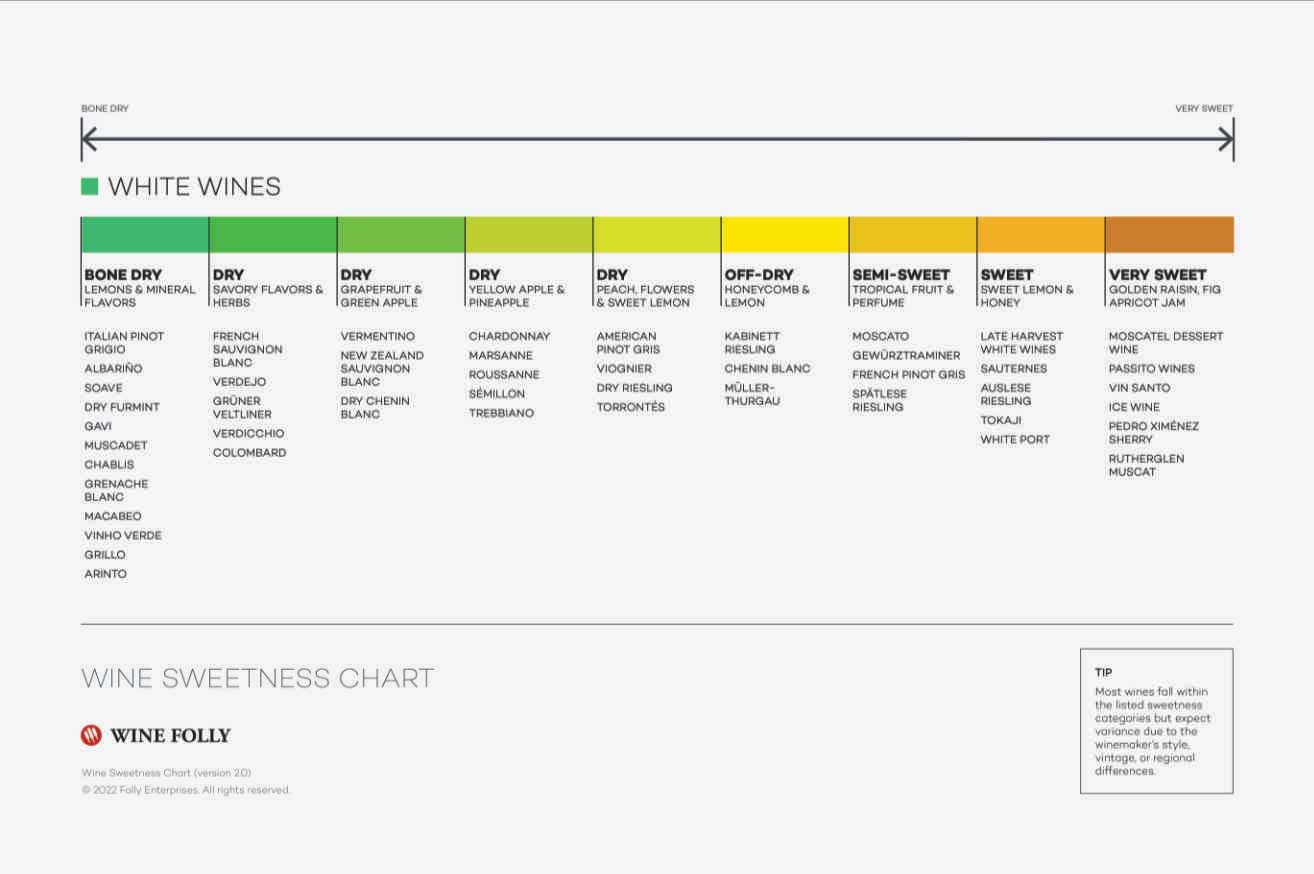To simplify the concept of wine sweetness, you can compare wines on this chart. Although not all wine conforms to the generalizations within, you can still learn a great deal about how to find wine in the sweetness range you prefer.

Wine Sweetness Chart
Some wines are so dry that they scrape the moisture from your tongue and make the inside of your mouth stick to your teeth. On the other end of the spectrum, some wines are so sweet that they stick to the sides of your glass like motor oil.
Why Some Dry Wines Taste “More Dry” Than Others
Wine writers have put words to the concept of dryness for years and food scientists have actually studied why some wines taste drier than others. Both groups claim that aroma, tannin, and acidity are key components to why a wine might taste “dry.”

You Might Be More Sensitive to Tannin Than Others
What’s interesting about tannin is that some people have higher sensitivities to tannin based on the number of proteins naturally present in their saliva.
People with more proteins in their saliva do not feel the drying effect of tannin as much as people with less. Another interesting fact is that the taste of tannin is reduced when paired with salty and fatty foods.

Acidity Tricks Our Perception of Wine Sweetness
Sour counterbalances sweet. A wine that has higher acidity will taste more ‘dry’ than a wine with less acidity. Several producers of New Zealand Sauvignon Blanc will leave a couple of grams of residual sugar in their wines because the acidity is so high.

Smell “Primes” Our Sense of Taste
Our sense of smell also greatly affects our perception of sweetness. As you can imagine, a wine that smells sweeter will also taste sweeter. Wine varieties are often referred to as ‘aromatic’ because of their sweet floral aromas.
A few examples of this are Riesling, Gewürztraminer, Torrontés, and Moscato.
Explore the Wine Sweetness Chart Poster